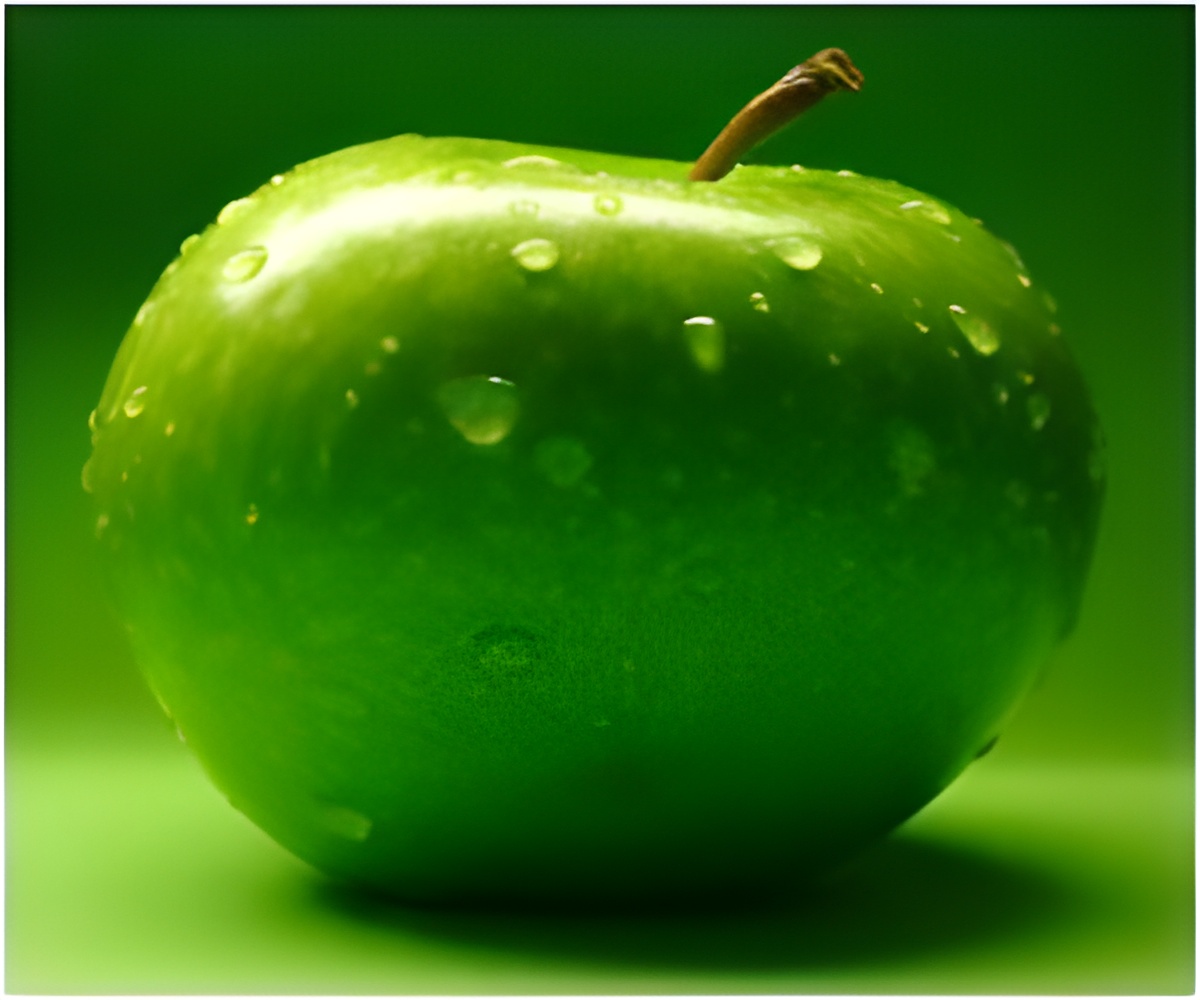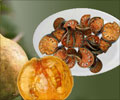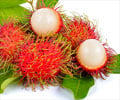New evidence that a century-old food preservation technology is finding a new life amid 21st century concerns about food safety and nutrition, scientists are reporting.

The technology, called high-pressure processing (HPP) involves subjecting food to 40,000-80,000 pounds of pressure per square inch for about 15 minutes. That's about five times the pressure that an African elephant would exert if it stood on a postage stamp. Applied evenly, however, the force in HPP does not squash the food — which can be fresh, processed, liquid or in other forms. The pressure does change the molecular structure of the microbes in food in ways that kill bacteria, molds and viruses. The technique also is known as "pascalization" in honor of the 17th century French scientist Blaise Pascal, famous for research on the effects of pressure on liquids. It differs from the more familiar thermal pasteurization process, which involves heating milk, beer and other foods to kill bacteria.
Carmen Hernandez-Brenes, Ph.D., presented results of the new study on HPP's effects on antioxidants in fruit. Her presentation was part of a symposium, which began today, entitled "Tropical and Subtropical Fruits: Flavors, Color, and Health Benefits." Abstracts of the nearly two dozen presentations by international authorities on those topics appear at the end of this press release.
Hernandez-Brenes and colleagues set out to check the effects of HHP processing stability of a key group of antioxidants, termed carotenoids, using the pulp of avocado, papaya and mango subjected to HPP for three minutes. The researchers are with the Department of Biotechnology and Food Engineering, Technologico de Monterrey, Monterrey, Mexico.
HHP processing increased the concentration of total carotenoids in avocado and papaya by more than 50 percent. Individual members of this healthful family of chemicals increased by up to 513 percent, as detailed in Hernandez-Brenes' abstract, below. For reasons not yet clear, no increases occurred in the mango.Their findings also support the possibility that the increases occur as a self-defense mechanism in fruit tissue. Hernandez-Brenes and collaborators detected viable genetic material called RNA after high-pressure treatment, and further work is underway to provide evidence that cells in the fruit had shifted into high gear to make more antioxidants to cope with the stress from HPP.
The following are abstracts from the symposium:
Advertisement
- Climate and salinity effects on health promoting and color properties in the pomegranate. Hamutal Borochov-Neori, Ph.D., Southern Arava Research and Development, Hevel Eilot, Israel. Pomegranate (Punica granatum L.) became a commercially important crop in recent years due to multitude health promoting properties attributed to different parts of the fruit. Worldwide pomegranate production has expanded greatly in traditional, as well as new locations of diverse climatic and water conditions. The pomegranate industry demands fruit with intense red color and high antioxidant content. It is therefore especially important to investigate the effects of climate and water quality on pomegranate anthocyanin and total polyphenolics accumulation. Our current research has focused on the edible part of the fruit, specifically, the arils. A diverse selection of pomegranate cultivars was employed. To explore climate effect, fruit that developed and ripened under a wide range of temperature regimes were studied. To explore water quality effect, fruit from plants irrigated with a wide range of salinities, from 0.5 to 9 dS m-1, were studied. Aril anthocyanins were analyzed by RP-HPLC and phenolics content was determined by the Folin-Ciocalteau assay. Both abiotic factors considerably affected the accumulation of polyphenolics and anthocyanins in the pomegranate arils. Cooler temperatures enhanced the accumulation of both health-promoting and pigment compounds. Increased salinity enhanced polyphenolics accumulation but reduced that of anthocyanins. Climate also affected significantly the relative proportions of delphinidins and cyanidins and their level of glucosylation. Our results on climate and salinity effects on pomegranate color and antioxidant traits can benefit the current breeding and agricultural efforts to enhance pomegranate fruit quality, especially in face of global warming and water quality deterioration.
- Plant breeding and genetic approaches to improve flavor and nutrients in vegetables. Sekhar S. Boddupalli, Ph.D., Monsanto Vegetables Division, Woodland, Calif. During the past 20 years, there has been a dramatic increase in obesity and diabetes across the globe. Escalation in prevalence and progression of this global, diet-linked epidemic is generally attributed to caloric-rich, nutrient-poor diets, increase in aging population and a sedentary lifestyle. Significant scientific support exists that increased consumption of vegetables is associated with lower risk of chronic diet-linked diseases. In spite of the inherent nutritive value and need for enhanced consumption, there is not enough consumption of vegetables due to perceived poor taste, appearance appeal and convenience. Enhancing the levels of precursors to essential nutrients and phytonutrients in vegetables would have favorable impact on consumer sensory appeal at the same time delivering higher nutritional value. Significant opportunity exists to integrate advances in breeding technology, high throughput analytical and molecular nutrition tools to address unmet consumer need and also meet the global demands of agricultural productivity. Germplasm diversity for various consumer and agronomic traits along with whole genome sequence information, molecular markers, biochemical pathway insights and high-throughput phenotyping enable rapid innovation of new crop varieties for enhancing consumption and ensuring crop productivity. Progress in deploying plant breeding coupled with high-throughput genetic and molecular approaches to enhance flavor and nutrition in vegetables will be presented. Advertisement
- Characteristic volatile compounds from Nagami kumquats (Fortunella margarita) and their cell proliferation effect. G.K. Jayaprakasha, Ph.D., Texas A&M University, College Station, Texas. Kumquats, a citrus fruit of Fortunella species, have been used in traditional herbal medicine, especially for cold and cough. The fruit varies in shape from round to slightly oval of 2 cm diameter. The genus Fortunella is taxonomically close to Citrus. To the best of our knowledge, systematic study on identification of characteristic flavoring compounds and their health benefits is limited. In the present study, fresh Nagami kumquats were subjected for the isolation of volatile components by hydro-distillation using Clevenger-type apparatus. The chemical constituents were analyzed by GC-MS using dimethylpolysiloxane capillary column. Fifteen volatile compounds were identified by mass spectral fragmentation and Kovats indices. The major hydrocarbon identified was d-limonone along with oxygenated compounds. The identified oil was subjected for proliferation inhibition activity studies using human androgen dependent prostate cancer (LNCaP) cells. The volatile oil exhibited time dependent inhibition of LNCaP cells proliferation. Treatment of 100 µg/ml of volatile oil for 72 h resulted in 50% proliferation inhibition, suggesting the significant activity of kumquats volatile oil. The activation of program death induction was found to the key mode for proliferation, which was confirmed through western blot analysis of LNCaP cells treated with 100 µg/ml. The constituents of volatile oil has resulted in elevation of Bax/Bcl2 ratio, activation of death inducing protein (p53), caspase-3 and caspase-8 the key markers for apoptosis induction. The constituents have also demonstrated their ability to inhibit inflammation-inducing markers, suggesting possibility of association of anti-inflammatory activity along with induction of apoptosis. Taken together, the monoterpenes rich volatile oil of Fortunella margarita has a beneficial role in prevention of cancer cells proliferation, and the results suggest further studies using in vivo system for better applications. These results are based on the work supported by the USDA-NIFA # 2010-34402-20875 "Designing Foods for Health" through the Vegetable & Fruit Improvement Center.
- Pineapple juice flavor: Key aroma compounds and changes during industrial processing. Dr. Martin Steinhaus, German Research Center for Food Chemistry, Freising, Germany. Pineapples are one of the most important tropical fruit crops. They are mainly consumed as fresh fruit, but also processed to canned fruits and juice. Screening for aroma-active compounds in a fresh pineapple juice, characterized by a pleasant fresh, fruity aroma using aroma extract dilution analysis, revealed 18 substances with high FD factors. Their quantitation by stable isotope dilution assays resulted in 13 compounds that exceeded their odor thresholds. The aroma of an aqueous pineapple juice model solution based on these natural odorant concentrations perfectly resembled the aroma of the original juice, thus indicating that the key aroma compounds were included. Subsequently, changes in major aroma-active compounds during industrial NFC juice processing were studied. Results indicated that losses in major odorants, as well as the formation of methional from its precursor methionine during processing, accounted for the development of a kind of "cooked"-like off-flavor in the industrially manufactured pineapple juice.
- Study of the genetic factors that control fruit color variation in pomegranate (Punica granatum L.). Doron Holland, Ph.D., Newe Ya'ar Research Center, Agricultural Research Organization, Ramat Yishay, Israel. Different pomegranate varieties display high variability of fruit color ranging from green to dark purple. Skin and aril color in pomegranate is determined by anthocyanin molecules. Apart from being important for the commercial value of the fruit, anthocyanins help to protect the fruit from radiation damage and are important for human diet as free radical scavengers and inhibitors of lipid peroxidation. Our study is aimed towards understanding the genetic factors that are responsible for the high variation observed in skin color, type of anthocyanin molecules and rate of pigment accumulation during pomegranate fruit development. The sequence of over 200 genes potentially involved in the anthocyanin biosynthetic pathway was determined, and expression data for some of the genes was associated with anthocyanin content in several pomegranate cultivars that prominently differ in their skin color. The molecular genetic data combined with phenotypic analysis of segregating populations is expected to reveal the genetic factors that determine color variation in pomegranates.
- High hydrostatic pressure processing as a strategy to increase carotenoid contents of tropical fruits. Carmen Hernandez-Brenes, Ph.D., Department of Biotechnology and Food Engineering, Technologico de Monterrey, Monterrey, Mexico. Avocado (Persea americana), papaya (Carica papaya) and mango (Mangifera indica L.) contain bioactive molecules that protect human cells against the detrimental effect of reactive oxygen species. High hydrostatic pressure (HHP) processing has been pointed to as an effective alternative to stabilize tropical fruit pulps due to retention of flavor and desirable sensory characteristics. Project objectives were to evaluate the HHP processing stability of carotenoids from avocado, papaya and mango pulps and of plant cell oxidative stress biomarkers. HHP processing (600MPa/3min) caused an increase in total carotenoid concentrations (~56%) for avocado pulp. Neoxantin b showed the highest percentage increase (513%) followed by a-criptoxantin (312%), a-carotene (284%), b-criptoxantin (220%), b-carotene (107%) and lutein (40%). Papaya pulps presented increases in phytofluene (224%), phytoene (222%), lycopene (207%), beta-cryptoxanthin (145%) and beta-carotene (131%), while mango carotenoids remained unchanged. Higher concentrations of extractable carotenoids have been attributed to possible changes in the permeability of cells and chloroplast membranes induced by HHP processing. Herein evidence was provided that HHP application caused oxidative stress within the tissue, and intact RNA molecules were found in pressurized samples suggesting that the cells are metabolically active and biosynthesizing plant cell antioxidants.
- Preparative separation and pigment profiling of betalains from fruits of Opuntia ficus-indica by ion-pair high-speed countercurrent chromatography (HSCCC). Dr. Gerold Jerz, Analytical Flavor Research, Symrise AG, Holzminden, Germany. Opuntia varities play an important role as a drought-tolerant plant resource for fruit, fodder and land conservation. Opuntia fruits moved to the scientific focus due to nutritional values and their potential health properties such as treatment of diabetes. Pigment profiling of betaxanthins and betacyanins occurring in yellow,orange and violet Opuntia ficus-indica fruits from Sicilia had been realized by using two chromatographic dimensions including preparative ion-pair HSCCC and subsequent off-line LC-ESI-MS/MS analysis of the recovered fractions. Countercurrent chromatography as an all-liquid chromatographic technique is commonly applied in preparative scale isolation procedures, where solely immiscible biphasic solvent systems are used. For separation of the highly instable and polar betalain structures, suitable solvent systems not inducing degradation of these pigments are t-butylmethylether, n-butanol, acetonitrile and water. Different perfluorinated carboxylic acids were used as ion-pair modifiers for the preparative recovery by HSCCC of charged betalains from Opuntia fruits. Minor concentrated lipophilic betacyanins such as 15R- and 15S-phyllocactin were identified by LC-ESI-MS-MS, so far not known in violet pigmented Opuntia fruits.
- Chemoprofiling of Palestine sweet lime (Citrus limmetioides) volatiles and their inhibitory role of colon cancer cells proliferation. Bhimanagouda S. Patil, Ph.D., Texas A&M University, College Station, Texas. Citrus juice is the most appreciated juice beverage world-wide, due to its characteristic aroma. Volatile compounds are especially important to the flavor of orange, lime, lemon and grapefruit juice, including alcohols, aldehydes, esters, ketones and hydrocarbons. Most of the citrus fruits accumulate high concentration of citric acid and soluble sugars. Generally vacuolar pH of acid limes will be 2.0 and in case of Palestine sweet lime (Citrus limmetioides) the pH is 5.0. To our knowledge, there is no report on chemical composition of volatile oil from Palestine sweet lime (PSL). In the present study, PSL were juiced and subjected to hydro-distillation for four hours to obtain volatile oil. The chemical composition was analyzed by gas chromatography coupled with mass spectra. Volatile compounds were separated on Rtx-5 Sil MS column. Fifteen compounds were identified by comparing the retention indices, co- injection with standards and matching their mass spectral fragmentations. Hydrocarbons were found to be most abundant compounds present in this volatile oil. This oil demonstrated significant dose-dependent inhibition of colon adenocarcinoma (SW480) cell proliferation with inhibition of more than 40% cells at 75 µg/ml at 24 h. Furthermore, induction of apoptosis by the compounds was confirmed through translocation of phosphatidylserine upon incubation of cells with volatile oil at 50 µg/ml. Immunoblotting of the SW480 cells treated with volatile oil at less than 50 µg/ml clearly demonstrated induction of apoptosis and suppression of inflammatory marker NFkB. Furthermore, its down-stream products are the most possible cause for cytotoxicity. This is the first report on chemoprofiling and anti-proliferative role of volatile oil from PSL. These results are based on the work supported by the USDA-NIFA # 2010-34402-20875 "Designing Foods for Health" through the Vegetable & Fruit Improvement Center.
- Metabolomic models of fruit extracts and chemoprevention. Faith J Wyzgoski, Ph.D., The Ohio State University, Mansfield, Ohio. Recent studies have shown that freeze-dried black raspberries (Rubus occidentalis L.) are effective in preventing the proliferation of cancer cells, most notably with respect to colon and oral cancers. Seeking to better understand these results, our interdisciplinary research group employed nuclear magnetic resonance (NMR)-based metabolomic methods to build statistical models to discern the relationships between constituents of black raspberries with respect to inhibition of proliferation of growth of HT-29 colon cancer cells. Studies were conducted with highly variable black raspberry samples obtained from fruit in varying stages of ripeness. When NMR data were regressed against cell assay results using partial least squares regression analysis, regression vector values were calculated and correlated with specific compounds found in black raspberries. Rankings of the regression vector values showed that the major chemopreventive contributors were anthocyanins, cyanidin 3-O-rutinoside, cyanidin 3-O-(2(G))-xylosylrutinoside and cyanidin 3-O-glucoside. However, other phenolic compounds which included hydroxybenzoic and ellagic acid derivatives were also found to be important. Advanced NMR experiments coupled with HPLC-ESI-MS/MS were conducted on additional black raspberry extracts to aid in their identification. Our work indicates that these metabolomic techniques could be applied to a variety of fruit extracts to study chemopreventive effects.
- Antioxidant activity of anthocyanin-rich Colombian tropical fruits. Dra. Coralia Osorio, Universidad Nacional de Colombia, Bogotá, Colombia. A screening of anthocyanin composition (qualitative and quantitative) and antioxidant activity of four wild tropical fruits from Colombia was achieved. Rubus megalococcus Focke (Rosaceae), Myrciaria aff cauliflora D. Bery (Myrtaceae), Hyeronima macrocarpa Mull. Arg. (Euphorbiaceae), and Hyeronima macrocarpa (Euphorbiaceae) fruits were separately extracted with methanol-acetic acid (19:1, v/v). In each case, the lyophilized extract obtained after solvent evaporation under vacuum was applied on an Amberlite XAD-7 column for the selective adsorption of anthocyanins. The column was washed with water, and the anthocyanin-rich extracts (AREs) were obtained after elution with methanol-acetic acid (19:1, v/v). Each extract was analyzed by HRESI-MS and MS/MS in a LCMS-IT-TOF equipment in order to characterize the anthocyanin pigments. The comparison of these results with standards allows identifying the major constituents in each extract. Electron Paramagnetic Resonance (EPR) is a highly specific and sensitive technique for direct detection and quantification of free radicals generated by ex vivo or in vivo chemical reactions, and is based on the absorption of microwave energy by unpaired electrons when they are in a magnetic field. Thus, the antioxidant activity of AREs was measured with stabilized radical EPR spectroscopy. The ARE of Hyeronima macrocarpa exhibited the highest radical scavenging activity in comparison with the other extracts, using ABTS and DPPH as free radicals. A second-order kinetic model was followed in all of the cases. These results suggested that the studied fruits are promising not only as source of natural pigments but also as antioxidant materials for food industry.
- Flavonoid content and antioxidant properties of some tropical and subtropical fruits from the Annonaceae and Citrus genera. Dr. Davide Barreca, Università di Messina, Messina, Italy. We have investigated the composition and properties of some tropical and subtropical fruits belonging to the Annonaceae and Citrus genera. RP-HPLC-DAD-MS-MS analysis showed that cherimoya (A. cherimola) is characterized by the abundance of flavan-3-ols (epicatechin and procyanidins), kumquat (C. japonica) by a dihydrochalcone (phloretin-di-C-glucoside) and flavones, sweet lemon (C. limetta) by flavanones (neohesperidin and eriocitrin) and flavones, and citron (C. medica) by flavones (dosmetin-di-C-glucoside, neodiosmin) and flavanones. Cherimoya extracts possess remarkable radical scavenging ability towards DPPH•, ABTS•+, O2•- and OH•- (IC50 100-490 gallic acid equivalents), and they have been tested for their anti-peroxidation and cytoprotective effects on tert-butylhydroperoxide-treated cells, and for their ability to avoid protein and DNA degradation by HOCl and Fenton-type reactions. As for kumquat, crude juice, selected flavonoid fractions and the main dihydrochalcone component have been tested separatedly against DPPH• and ABTS•+, gaining insight on the constituents responsible for antoxidant activity.
- Acai berries and walnuts: Brain health boosters. Shibu M Poulose, Ph.D., Neuroscience, USDA-ARS, Human Nutrition Research Center on Aging at Tufts University, Boston, Mass. Neuroinflammation (INF), oxidative stress (OS) and loss of protein homeostasis in the brain have been implicated in the alarming rise of age-related diseases, which will reduce the quality of life while raising medical costs. We investigated whether supplementing brain cells with extracts from walnuts or acai berries would reduce chemically-induced inflammation and OS, along with activating the brain's natural housekeeping functions. Thus, BV2 microglia, HT22 hippocampal neurons and autophagy-deficient ATG5 -/- fibroblast cells were pre-treated with acai berry or walnut extracts, then subjected to stress with lipopolysaccharide (LPS), dopamine (DA) or bafilomycin (BF). Acai pulp extracts rich in unique polyphenols and phytosterols at 50-250 µg/ml significantly (p<0.01) reduced the LPS/DA-induced OS/INF, measured in terms of TNF expression and phosphorylation of NFkB and p38-MAPK. Similar effects were also observed for walnuts at 30-90 µg/ml. Significant reversal of BF-induced autophagy inhibition was observed for both extracts (p<0.05), with altering effects on markers such as p62, MAP1B-LC3, beclin1 and mTOR. Overall, the results indicate multiple health-promoting effects of walnuts and acai berries on brain cells.
- Prevention of biofilm formation and bacterial adhesion after consumption of cranberry juice cocktail. Terri A. Camesano, Ph.D., Worcester Polytechnic Institute, Worcester, Mass. A double-blind, placebo-controlled pilot clinical trial on the effect of cranberry juice cocktail (CJC) consumption on biofilm formation and bacterial adhesion was conducted in 10 healthy womenbetween the ages of 18 and 27. A single dose of 16 oz. of CJC or a placebo beverage was given to the volunteers, and urine samples were collected in the following 48 hours. Bacteria (E. coli B37, CFT073, BF1023, HB101 and S. aureus ATCC43866) were cultured in the urine samples supplemented with media and the amount of biofilm formed was measured using a crystal violet absorbance assay in a 96-well plate. In the urine of volunteers who had consumed CJC, biofilm formation was inhibited within 24 hours after CJC consumption, and biofilm formation started to increase after 48 hours by 49-67%. S. aureus showed the least biofilm formation after incubation with post-CJC urine. While E. coli CFT073 is a commonly studied uropathogenic E.coli strain, and it expresses P fimbriae, E. coli B37 and BF1023 are antibiotic resistant and do not contain P fimbriae. Atomic force microscopy measurements of bacterial adhesion also revealed that cranberry metabolites could block bacterial adhesion, and changed the conformation of molecules on the bacterial surfaces. This is the first study to show that biofilm formation in antibiotic resistant E. coli and a wide range of uropathogens, including S.aureus, can be prevented in the urine of healthy women who have consumedCJC. We also demonstrated the duration of the benefit, noting that anti-biofilm activity in the urine peaks between 24 and 48 hours after drinking CJC, depending on the bacterial strain studied.
- Seed and juice characterization of pomegranate fruits grown in Tunisia: Comparison between sour and sweet cultivars revealed interesting properties for prospective industrial applications. Nejib Hasnaoui, U.R. Agrobiodiversity, Higher Agronomic Institute, Chott Mariem, Sousse, Tunisia. Tunisian pomegranate genetic resources consist of sweet and sour cultivars, showing large morphometric variability. In the present work we characterized seeds and juice contents of sugars and organic acids of 5 sour and 7 sweet pomegranate cultivars. Results showed that citric acid was predominant in sour pomegranates, while malic acid was the most prevalent in sweet ones. Paradoxically, sour cultivars have higher sugar content than the sweet ones. A strong correlation was found between sourness and citric acid content, which is assumed to be the major factor that determines sour taste in pomegranate fruits. Besides, some of the seed parameters showed a significant positive correlation with acidity. Sweet cultivars were appropriate for fresh consumption and juice production due to several attributes in addition to their sweetness. Equally, sour pomegranate showed several characteristics that could be of great interest for food and nutraceutical industries.
- Antitumor activity of garcinol from Garcinia indica in PC3 cells and dextran sulfate sodium treated mice. Chi-Tang Ho, Ph.D., Rutgers University, New Brunswick, N.J. Garcinol is derived from Garcinia indica and other related species of tropical fruits. It has been found that garcinol has several health-promoting effects including anticancer. In this study, we showed that garcinol could inhibit cell proliferation in PC3 prostate cancer cell by inducing apoptosis in a concentration- and time-dependent manner. We further observed that garcinol induced apoptosis in PC3 cells through modulation of mitochondrial functions regulated by reactive oxygen species. Significant therapeutic effects were demonstrated in vivo by treating nude mice bearing PC3 tumor xenografts with garcinol. In addition, we further evaluated the anti-inflammatory effect of garcinol on dextran sulfate sodium (DSS) induced colitis. Garcinol was administrated daily per oral route for 7 days and significantly attenuated DSS induced aberrant crypt foci and dose-dependently prevented shortening of colon length. Furthermore, garcinol inhibited DSS-induced iNOS and COX-2 expression. These results show that garcinol may have significant applications for cancer chemotherapy.
- Issues surrounding the anti-inflammatory actions of the citrus polymethoxylated flavones. John A. Manthey, Citrus and Subtropical Products Laboratory, U.S. Department of Agriculture, Winter Haven, Fla. The polymethoxylated flavones in citrus peels have been widely investigated for their in vitro and in vivo biological properties in mammalian cells. While the in vitro anti-inflammatory actions of the PMFs have been widely studied, there appears to be conflicting results about their in vivo actions. Animal dosing by direct injection typically results in potent inhibition of inflammation, while results obtained with oral dosing are mixed. In contrast, an early study of the immune-response driven inflammation in the Arthus Reaction exhibited excellent response to oral doses of PMFs. Evidence has also shown that the biological actions of the metabolites of the PMFs in animals may also be important to the overall effects of these compounds. Factors influencing the efficacies of oral doses of PMFs in different inflammation models need to be explored further.
- L-cysteine supplementation can increase insulin sensitivity by boosting blood levels of hydrogen sulfide and nitrite in type 2 diabetes. Sushil K. Jain, Ph.D., LSU Health Sciences Center, Shreveport, La. Garlic is a rich source of sulfides. Recent studies reveal several physiological roles of H2S, including vasodilator, antioxidant, anti-inflammatory and anti-atherosclerotic effects in in vitro and animal studies. Diabetic patients have lower blood concentration of H2S. This study examined the hypothesis that supplementation with L-cysteine, an endogenous precursor of H2S, replenishes blood levels of H2S and lowers insulin resistance and vascular inflammation markers in type 2 diabetes using Zucker diabetic rats (ZDF) rats as a model. Starting at age of 6 wks, ZDF rats were supplemented orally (daily gavages, 8 wks) with saline-placebo (D, n=8) or L-cysteine (LC, n=12, 1 mg/KgBW) and fed a high-calorie diet. 6 weeks of age rats without any supplementation were considered baseline (BL) rats. Fasting blood levels of D rats showed lower H2S, and elevated GHb, MCP-1 and insulin resistance when compared with BL in which there was no onset of diabetes. LC supplementation significantly (p<0.05) increased blood levels of H2S (37%) and NO2 (30%) and lowered levels of GHb (9%), MCP-1 (31%), TNF- (31%) and HOMA insulin resistance (25%) compared with levels seen in saline-supplemented D. The blood levels of GHb and IR showed a significant negative correlation (p<0.05) with concentrations of H2S and nitrite in LC supplemented ZDF rats. This is the first report showing L-cysteine supplementation can increase circulating levels of H2S and NO2 in a diabetic animal model, and needs to be explored as an adjuvant therapy for the reduction of vascular inflammation in the diabetic patient population.
- Development of flavor and antioxidant activity during the ripening of the date palm fruit (Phoenix dactylifera L.). Jane K. Parker, Department of Food and Nutritional Sciences, University of Reading, Reading, United Kingdom. The fruits of the date palm (Phoenix dactylifera L.) are highly nutritious. They contain high levels of carbohydrate and dietary fiber and are rich in vitamins, salts and minerals. They have a delicate flavor which is not well characterized. In this study, the flavor of different varieties of date palm fruit at different stages of ripening, including kimri, khalal, rutab and tamr were analysed. Volatile flavor compounds were extracted by dynamic headspace extraction and the more polar flavor compounds including phenols, furanones and pyranones were obtained by solid phase extraction prior to analysis by GC-MS. GC-Olfactometry was used to confirm the more odor-active components of each extract. Some of the important volatile compounds are derived from the polyphenol content of the dates. The polyphenols present in the dates at the four ripening stages were also characterized, as well as the total antioxidant activity.
- Bioactive compounds present in Moringa Oleifera: Isolation and characterization by thin layer chromatography and electrospray ionization mass spectrometry. Bishambar Dayal, Ph.D., New Jersey Medical School, Newark, N.J. Recently, we initiated a systematic study to examine the antimicrobial and anticarcinogenic activities of different sections of the tropical fruit Moringa Oleifera. We found strong polyphenolic and antioxidant activity in the skin, the inner skin skeleton, seed coat and the seeds of the Moringa Oleifera. Isolation and structure elucidation via thin-layer chromatography (TLC) /electro spray ionization-mass spectrometry (ESI-MS) of microwaved methanolic extract of inner skin skeleton provided 4-(alpha-L-rhamnopyranosyloxy) benzyl glucosinolate, an intact glucosinolate in addition to allyl isothiocynates, and thiocynates presumably by the hydrolysis of the enzyme myrosinase. Collision-induced dissociation mass spectra of anions present in Moringa Oleifera exhibited product ion at m/z 97, characteristic of sulfate moiety (HSO4-) in their molecular structure. The other characteristic fragment ion, m/z 195 was assigned to 1-thiohexose anion. Two minor peaks at m/z 259, 275 represented glucose 1-sulfate anion formed by the loss of phenyl isothiocynates and glucose 1- thiosulfate anion respectively. The ion at m/z 570 (100% intensity) corresponds to 4-(alpha-L-rhamnopyranosyloxy) benzyl glucosinolate. The acetyl derivative of intact glucosinolate provided m/z 612. To our knowledge, the intact acetyl derivative of 4-(alpha-L-rhamnopyranosyloxy) benzyl glucosinolate has not been reported in the literature. We believe that the isolation and structure elucidation of this intact glucosinolate and its acetyl derivative having antimicrobial and anticarcinogenic activity will be useful in the prevention and treatment of cancer and neurodegenerative diseases.
- Phenolic profile and antimicrobial activity of select exotic fruits. Christina Engels, Agricultural, Food and Nutritional Science, University of Alberta, Edmonton, AB, Canada. Exotic fruits are an abundant source of secondary plant metabolites, especially phenolic compounds. Despite a larger number of studies, our knowledge about their chemical structures and biological activities is still very limited. This is, among other factors, a result of the lack of analytical methods and reference compounds. Using liquid chromatography-mass spectrometry, we determined the profile of phenolic compounds extracted from two members of the Anacardiaceae family, mango (Mangifera indica L.) and jocote (Spondias purpurea L.), as well as from Amazon grape (Pourouma cecropiifolia Martius), which belongs to the Moraceae family. Phenolic acids, flavonoids including anthocyanins, and hydrolyzable tannins were characterized on the basis of their UV-Vis and mass spectra. Gallotannins isolated from mango kernel extracts using high-speed counter-current chromatography displayed strong antibacterial activity against several food-borne pathogens such as Listeria monocytogenes, whereas the growth of beneficial lactobacilli was not affected.
- Passion fruit seed containing high amounts of piceatannol could be a new anti-skin-aging material. Yuko Matsui, Research Institute, Morinaga & Co., Ltd., Japan. Passion fruit, the fruit of Passiflora edulis, is grown in the tropical region, and there are studies on the effect of polyphenols from the fruit. Here, we focused on the effect of passion fruit in cultured human melanoma and fibroblast cells to investigate the inhibition of melanogenesis and promotion of collagen synthesis. Passion fruit was divided into rind, pulp and seed to compare each activity in the cells. Treatment of melanoma cells with the seed extracts inhibited melanogenesis, and the production of total soluble collagen was also elevated in dermal fibroblast cells. The removal of polyphenols from the seed extracts led to the abolishment of these effects. We found out that piceatannol (3,4,3',5'-tetrahydroxy-trans-stilbene), is the major polyphenol in passion fruit seed, and that piceatannol and its related compounds are responsible for the seed extract's effects observed.
Source-Eurekalert














